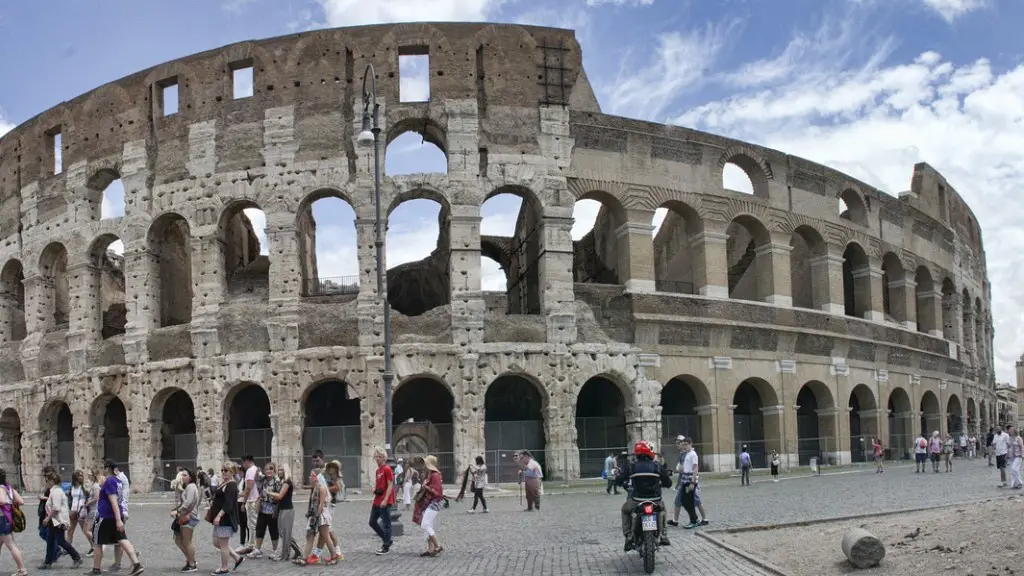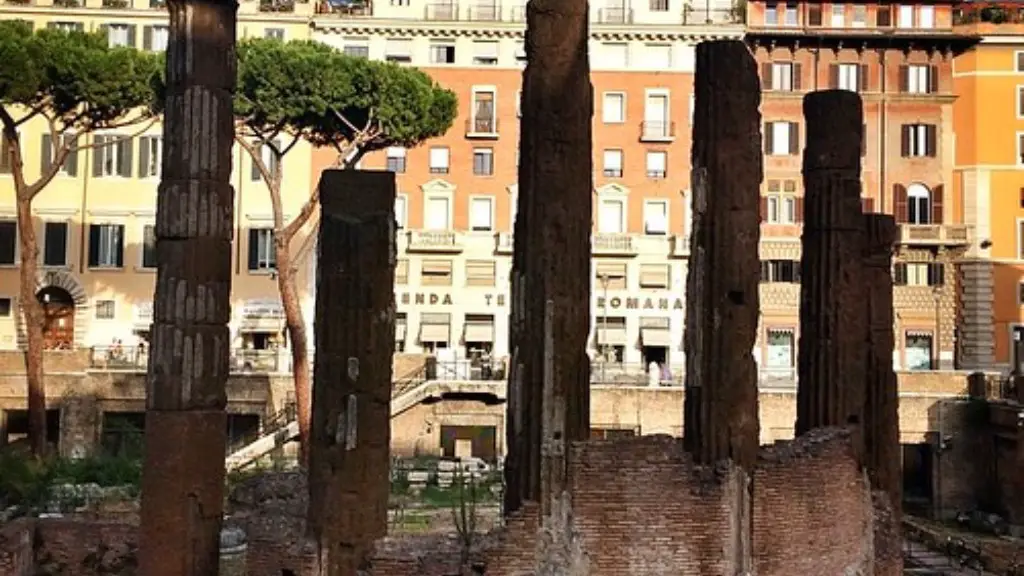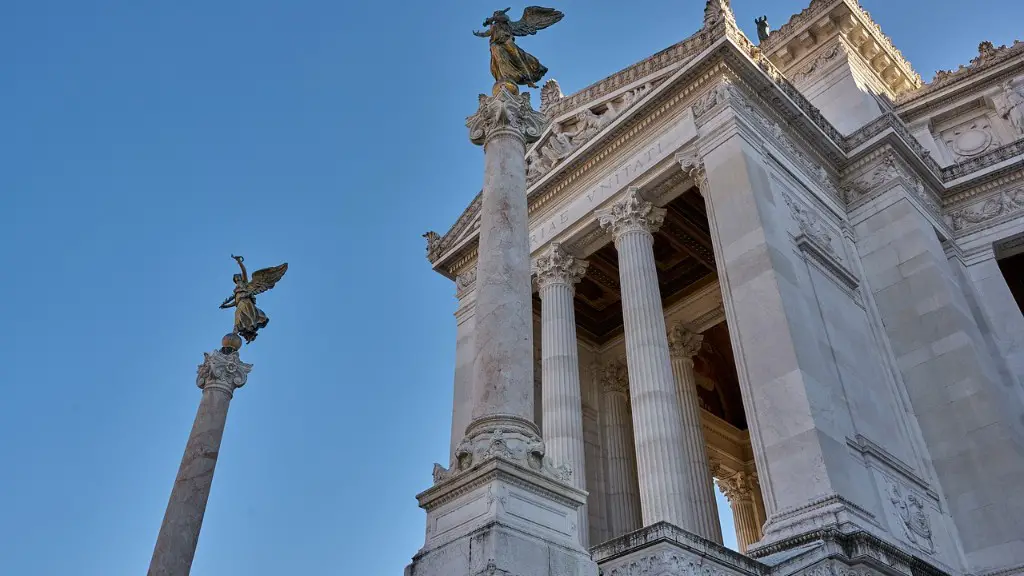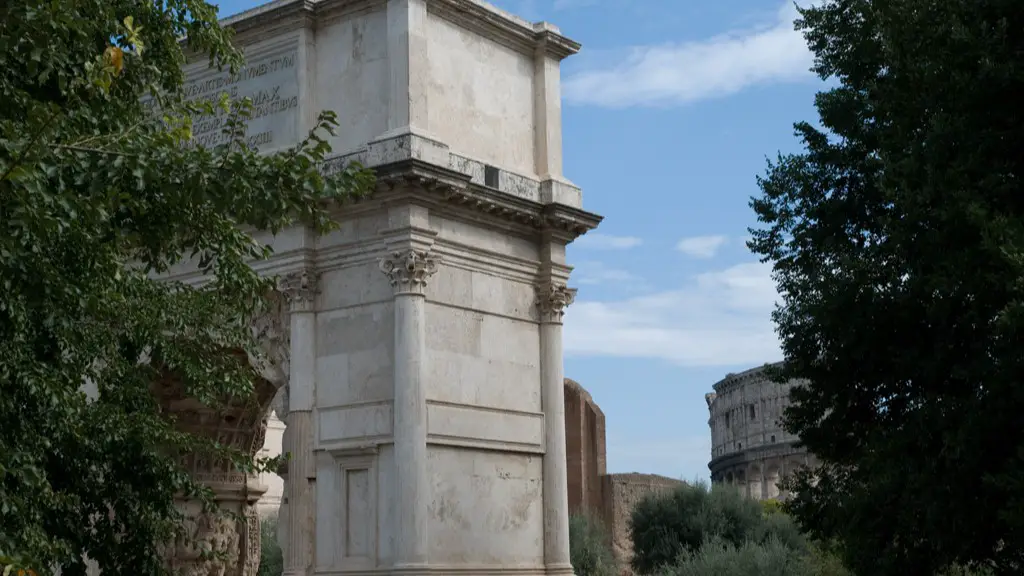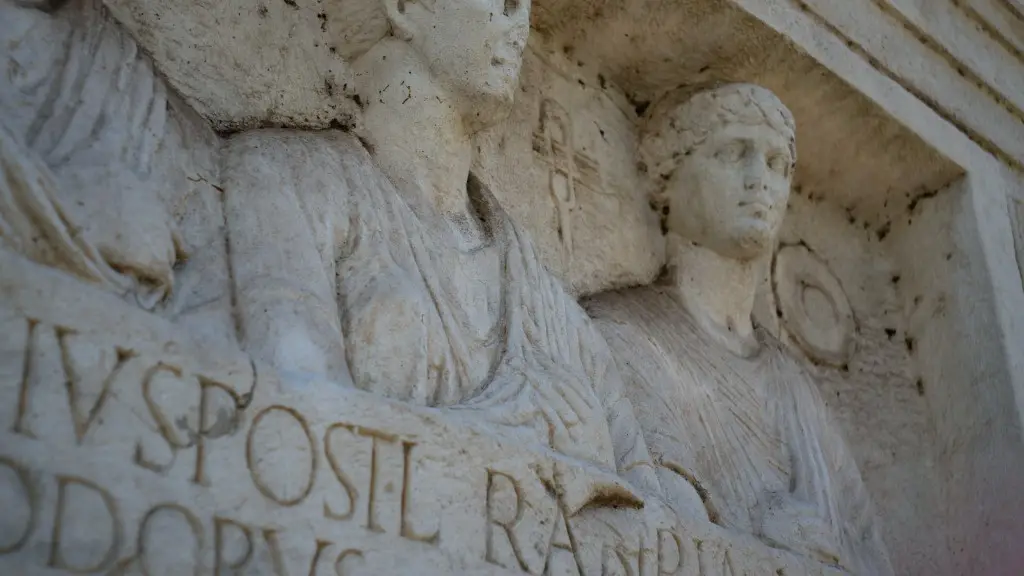Ancient Rome is one of the most important and influential civilizations in history. Its development and rise to power began in the 8th century BC and lasted for almost 500 years. During this period, Rome evolved from a monarchy to a republic and eventually to an empire. It was during this transition that the city’s government underwent a dramatic transformation, resulting in the establishment of the first government of ancient Rome. This article will explore the origins and structure of the first government of ancient Rome.
Although the exact origin of the first government of ancient Rome is unknown, some scholars believe that it was based on the system used by the Etruscan people that controlled the region surrounding Rome before it became a powerful city-state. This theory is grounded in the fact that the early Roman government was similar to that of the Etruscans, as both featured a complex network of elected officials, assemblies and councils. Additionally, both governments were headed by a single ruler, a king or consul.
The first Roman government was setup with a framework of three main branches: the Senate, the people’s assemblies, and the magistrates. The Senate was composed of patricians, the upper class citizens of Rome, who were chosen for life by the king or consul. They were responsible for passing laws and guiding the policy of Rome. The people’s assemblies were made up of all Roman citizens and were responsible for electing new officials, passing laws, and granting or revoking privileges. Finally, the magistrates were the executive branch of the Roman government and were responsible for enforcing the laws and carrying out decisions of the Senate and assemblies.
Although the government of ancient Rome began as a monarchy, the Roman people eventually grew dissatisfied with their king and sought to overthrow him. This led to a period of internal strife and civil war known as the Conflict of Orders. Eventually, in 509 BC, the Roman people overthrew their king and established the Roman Republic. This new system of government was based on a system of checks and balances between the three main branches of government.
Under the Republic, the Senate became the most powerful branch of government and was composed of elite members of the patrician class. This resulted in a system in which the ruling, wealthy class was able to maintain control over the government and the people. However, the Roman people were still able to exercise their right to vote for magistrates and pass laws through the people’s assemblies, allowing them to exert some influence in areas such as taxation, foreign relations, and military matters.
The first Roman government was an important milestone in the history of Rome and the world. Not only did it lay the foundations for the later Roman Empire, it also provided the basis for the development of modern governments around the world. The structure and principles of the Roman Republic have been widely studied and discussed by scholars of government for centuries and its influence can still be seen today in many aspects of our political system.
The Patricians
The patricians were the highest class of citizens in ancient Rome and were the only ones allowed to hold high positions in the Roman government. They were mostly members of a small group of wealthy Roman families, known as the patriciate, that had held power since the earliest days of the Roman Republic. The patricians formed a privileged elite class who held immense economic and political power over the rest of Roman society. They controlled the Senate, the magistrates, and the people’s assemblies, while enjoying special privileges such as exemption from taxes or the right to bear arms.
In addition to their political power, the patricians also wielded significant economic influence. They were legally allowed to own large amounts of land and wealth and had privileged access to loans and financing from the state. This enabled them to dominate Rome’s economy, as well as the lucrative trade network that extended throughout the Mediterranean world.
However, the power of the patricians was eventually challenged by the rising influence of the Roman plebeians, who were members of the lower class and often worked as traders, farmers, and artisans. This ultimately led to the establishment of the office of tribune of the plebs, a position created to protect the rights of the plebeians against the patricians. Eventually, the patricians’ power was curtailed and the plebeians were able to gain more rights and become more influential within the government of ancient Rome.
Senatorial Government
The Roman Senate was the most powerful branch of the Roman Government and was responsible for formulating laws and guiding Rome’s policy. The Senate was composed of patricians, who were chosen for life by the King or Consul and would act as advisors to the elected officials. They would propose legislation and approve legislation, as well as negotiate treaties and foreign policy concerning Rome’s allies and enemies.
The Senate functioned as an elected government, although the patrician elite dominated the Senate’s proceedings and decisions. This system enabled the patricians to maintain a monopoly on power, while at the same time providing a measure of accountability as elected officials could be deposed if they proved to be unpopular. Additionally, while the Senate was dominated by the patrician elite, the Roman people were still able to influence legislation through the people’s assemblies.
However, despite its potential to create a more equitable government, the Senate often descended into factional disputes and political gridlock. Over time the Senate grew increasingly corrupt and was unable to effectively manage the vast territories of the Roman Empire. This led to the rise of the Roman emperors, who eventually became the supreme rulers of the Roman world.
The Military
The Roman government was heavily reliant on its military for defense, expansion, and conquests. As such, the Roman military was one of the most important aspects of the government. The military was composed of professional soldiers under the command of a general, the most famous of whom was Julius Caesar. Each legion was composed of 5,000 infantry and cavalry, as well as support personnel such as engineers or medics. The legion was divided into cohorts, each numbering between 500-800 soldiers.
The military was organized and overseen by the consul, who held ultimate authority over the legions, and the tribune of the people, who could veto any command of the consul. This system created a balance of power and ensured that the military remained under the control of the government, rather than an individual leader. It also enabled the Roman government to maintain an unprecedented level of order and security in the vast territories of the Roman Empire.
The Roman military played a major role in the expansion of the Roman Empire, leading successful campaigns against the Gauls, Britons, and other civilizations. It was also used for defense against foreign enemies, often relying on new technologies and tactics developed by the legions to secure victory. In addition, the Roman military played a role in maintaining internal peace and order within the Empire, often being dispatched to maintain order in provinces or suppress rebellions.
Civic and Religious Rites
The government of ancient Rome also took on a religious dimension, as many of its festivals and rites were performed to honor the gods. The Roman pantheon included gods such as Jupiter, Juno, Minerva and Mars, who were believed to have direct control over rulers and cities. The citizens of Rome would take part in various religious rites and festivals in honor of these gods, as they believed them to be a source of protection and prosperity. These festivals often featured processions and sacrifices, including animal sacrificial rituals to please the gods.
Civic rites were also important in the daily life of the citizens. Every year, the citizens of Rome would take part in festivals and ceremonies that celebrated the city’s founding, honored its gods, and celebrated military triumphs. These festivities were integral to forming a sense of civic pride and were often accompanied by parades, games, and public performances. The public and private worship of the gods was a fundamental part of the Roman government and its citizens.
Decline and Legacy
Over time, the government of ancient Rome slowly deteriorated and eventually ceased to function. This was due to a variety of factors, including the increasing complexity of Roman society, the rise of foreign powers, and internal corruption and incompetence. Eventually, the Roman Republic was replaced by the Roman Empire, which featured a single ruler with absolute authority. This ultimately led to the decline of the Roman Empire and, while it maintained a shadow of its former glory, its government ceased to exist as a political entity.
The legacy of ancient Rome’s government is still seen today in many aspects of our modern political system. Its checks and balances, tripartite system of government, and the concept of rule of law have all been adopted by modern governments and continue to be influential in the present day. Additionally, the investigations and conversations surrounding the downfall of the Roman Republic continue to inform how we view, study, and approach the concept of government today.
